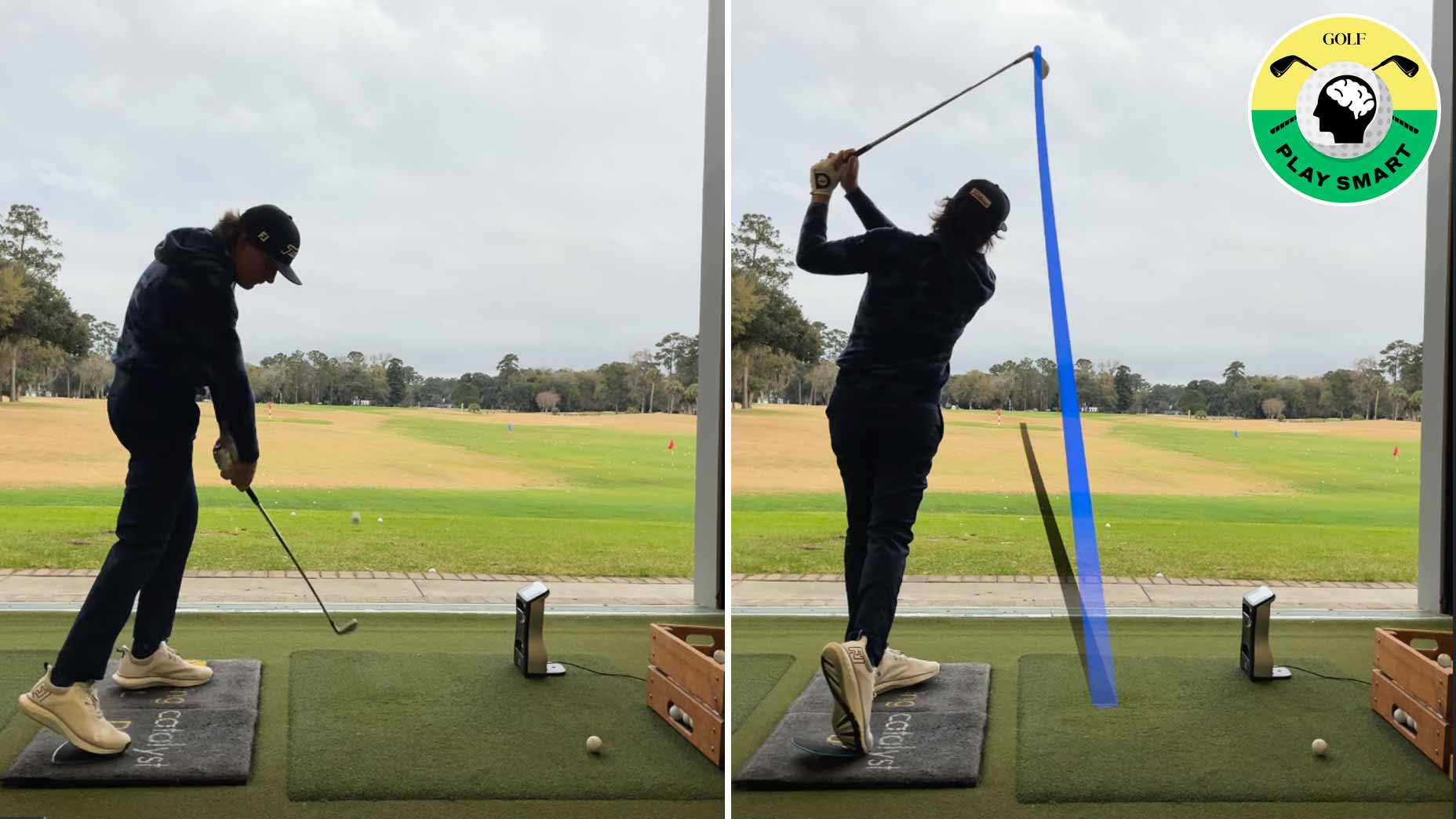No matter what your distance is off the tee, every golfer wishes they could hit the ball just a little bit farther. Power is king in the current era of golf and added distance correlates to lower scores.
Data and analytics experts have quantified the advantages of power in recent years, and Bryson DeChambeau has made his affinity for bombs mainstream. He used the 2020 pandemic-induced hiatus to dedicate himself — and his body — to increasing his speed, and the efforts paid off with a win at the 2020 U.S. Open.
But while DeChambeau’s tactics were undoubtedly effective, they were also a bit extreme. Videos of his speed-training and weight-lifting routines surface regularly, and the intensity is more akin to a powerlifter than that of a golfer. And that’s not to mention the physical transformation he pulled off; DeChambeau has added around 40 pounds of muscle since his college days as he’s become one of the bulkiest players in pro golf.
However, adding speed to your swing doesn’t have to come at the cost of your physique. DeChambeau’s method was unquestionably effective, but it’s not the only way to get longer off the tee. In fact, according to one speed-training expert, you can add distance to your game without getting bigger at all.
“You don’t necessarily have to get big muscles or grow in size,” says Jaacob Bowden, a Class A PGA Professional. “It’s more about strengthening and speeding up the muscles that you use from the top of the backswing down to impact, in the specific way that you’re using them in the golf swing.”
Bowden, a World Long Drive record holder and speed-training guru, invented his own speed training program that he says can add 12-16 mph of clubhead speed within the first 30 days. His philosophy is simple and focuses on two main components: train your body what it feels like to swing fast through repeated reps, and workout the specific muscles used from the top of your swing down to impact.
“I don’t think that the golf industry understands yet that [speed training] needs to be really specific to how you’re swinging,” Bowden says. “Rather than doing a bench press or that kind of thing, it would be better to get a cable machine.”
You can see an example of one of his training sessions below.
Bowden’s philosophy on speed training is based on isometrics, which are exercises in which “muscles are caused to act against each other or against a fixed object.” He applies isometrics to golf by using resistance bands and mimicking the golf swing from the top of the backswing down to impact. By gradually upping the resistance each week and repeating the training, he teaches his muscles to swing faster from the top down to impact.
“The most important muscles to strengthen are those you use from the top of the swing down to impact,” he says. “Everyone at the top of the backswing is starting at zero, whether you’re a long-drive champion or a club amateur.”
This form of training does not alter your swing at all, and instead strengthens the muscles you actually use during the swing. The only thing that changes is how hard you can swing when you go back out to the course.
“I want to take the swing you have and train that technique to raise your max swing speed over the course of training,” Bowden says. “That way when you back off to your play speed it’s faster. Much faster.”










